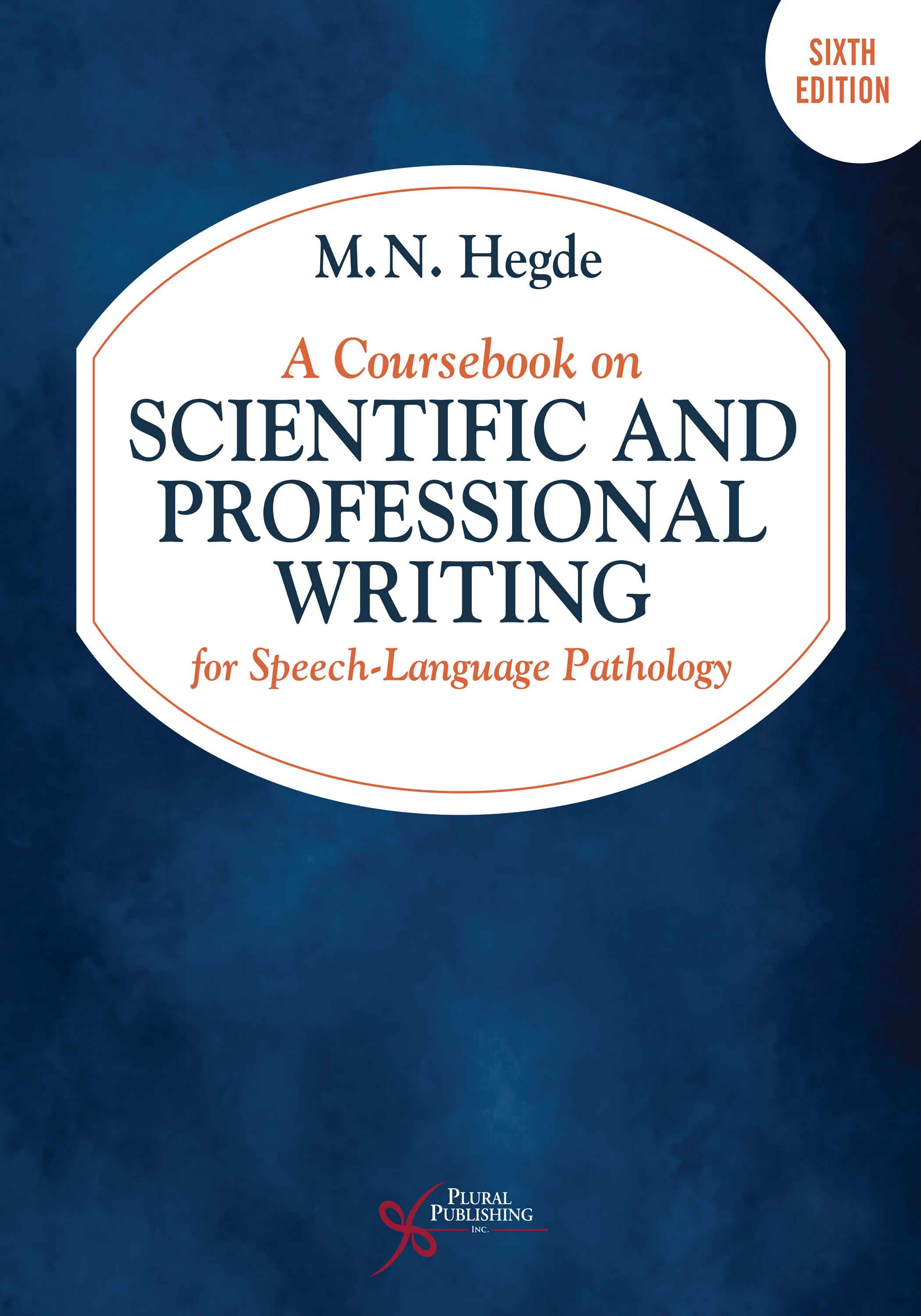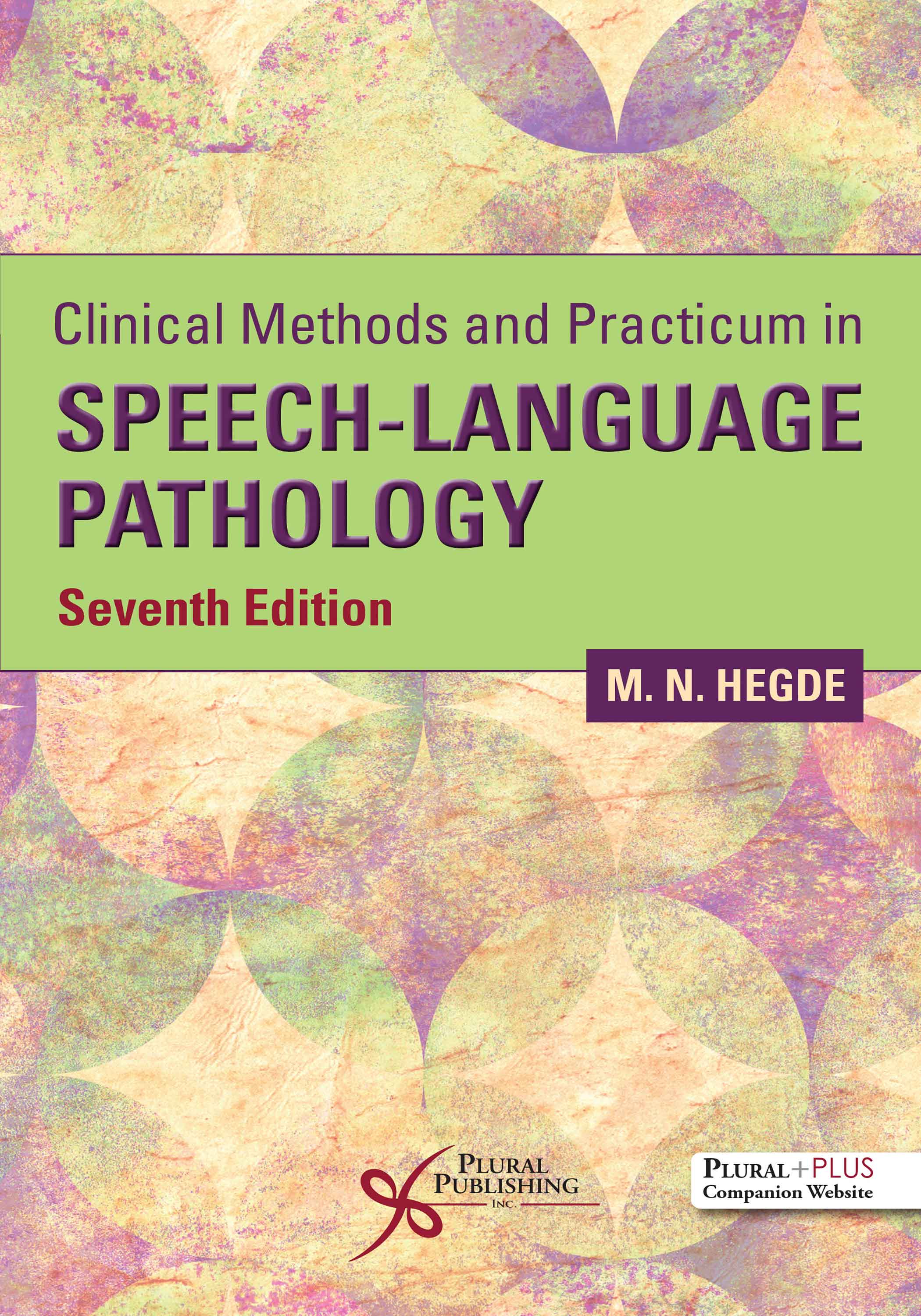
Professional Communication in Speech-Language Pathology: How to Write, Talk, and Act Like a Clinician
Fifth Edition
A. Embry Burrus, Laura B. Willis
Details: 280 pages, B&W, Softcover, 7" x 10"
ISBN13: 978-1-63550-658-7
© 2026 | Available
For Instructors
Purchase
In Professional Communication in Speech-Language Pathology: How to Write, Talk, and Act Like a Clinician, Fifth Edition, the authors focus on preparing student clinicians for the diverse forms of communication they will encounter in their clinic practicum experience. The text highlights the importance of effective written and verbal communication in university clinics, medical settings, and public schools, and provides guidance for these professional settings. Designed to help students navigate communication challenges, the text utilizes practical examples of diagnostic and treatment reports, data sheets, and essential acronyms to equip them with the necessary tools to communicate effectively. To promote a student-friendly text, vignettes are incorporated into each chapter to present ethical dilemmas, interview scenarios, and procedures for handling confidential health information to help students understand the material on a practical level.
New to the Fifth Edition
- Expanded content regarding cultural sensitivity and bias
- Updated information on current requirements and policies for written documentation
- Expanded and updated information regarding HIPAA and the ASHA Code of Ethics
- Numerous additional examples to further clarify the content
- Reorganization of the chapters for greater flow of information
- References updated throughout to reflect current research and evidence-based practice
Key Features
- Each chapter includes learning outcomes, active learning exercises, and reflection questions
- Chapters include specific information to differentiate between the university clinic, medical, and public-school settings
- Numerous vignettes to illustrate key concepts and recommended practices
- Helpful appendices provide practical examples of diagnostic and treatment reports, data sheets, and essential acronyms
- Evidence-based research is referenced as well as how to practically apply the information
- Student-friendly verbiage to make complex concepts easy to follow
PluralPlus Online Ancillary Materials
For instructors: PowerPoint slides, Activities/exercises, Reflection questions
Preface
Section I. Introduction to Professional Communication, Clinical Practicum Sites, and Ethics
Chapter 1: The Nature of Professionalism and Professional Communication
Learning Outcomes
Introduction
Professional Written Communication
Professional Verbal Communication
Shared Components of Professional Written and Verbal Communication
Reflection Questions
Chapter 2: Learning as the Rules Change: The Many Faces of Clinical Practicum
Learning Outcomes
Introduction
Clinical Settings
The University Setting
The Medical Setting
The School Setting
Reflection Questions
Chapter 3: Ethics, Confidentiality, and Safeguarding Clinical Communications
Learning Outcomes
Health Insurance Portability and Accountability Act (HIPAA)
American Speech-Language-Hearing Association (ASHA) Code of Ethics
The University Speech and Hearing Clinic
Treatment Plans and Progress Notes
Formal Treatment Reports
Formal Diagnostic Report
Test Forms
Authorization Forms
Therapy Schedules
Verbal Discussions
Audio/Video Recordings
The Medical Setting
The School Setting
Reflection Questions
Section II. Professional Written Communication
Chapter 4: Documentation and Technical Writing
Learning Outcomes
The Basics of Writing
Language
Tone
Organization
Common Errors
Remember Your Audience
Editing
Reflection Questions
Chapter 5: Diagnostic Reports
Learning Outcomes
The Organizational Framework of a Diagnostic Report
The University Setting
The Medical Setting
The School Setting
Reflection Questions
Chapter 6: Treatment Documentation
Learning Outcomes
What Are Long-Term and Short-Term Goals?
Definition of a Goal
The Importance of Rationales
Data Is Critical
The University Setting
The Integration of Long-Term Goals (LTGs), Short-Term Goals (STGs), and Rationales
The Medical Setting
The Rehabilitation Setting
The Hospital Setting
Long-Term Care/Skilled Nursing Facility
The School Setting
Individualized Education Program (IEP)
Individualized Family Service Plan (IFSP)
How Is the IFSP Different From the IEP?
How Does the IEP Reflect Specific Goals?
Similarities and Differences in Goal Writing Across Settings
Reflection Questions
Chapter 7: Short-Term Progress Reports
Learning Outcomes
Progress Reports
The University Setting
Example 1: Aphasia Client
Example 2: Child Language Client
Example 3: Child Articulation Client
Example 4: Fluency Client
The Medical Setting
The School Setting
Reflection Questions
Chapter 8: Long-Term Progress Reports
Learning Outcomes
The University Setting
The Medical Setting
The Rehabilitation Setting
The Hospital Setting
Long-Term Care/Skilled Nursing Facility
The School Setting
Reflection Questions
Chapter 9: Professional Correspondence
Learning Outcomes
Format/Organization
Phone Correspondence
Reflection Questions
Section III. Professional Verbal Communication
Chapter 10: Improving Communication Skills & Strategies
Learning Outcomes
Selected Critical Elements of Professional Verbal Communication
Show Respect
Organize
Use Professional Tone
Listen and Understand
Attend To Context
Modify Based On Feedback
The Value of Experience
Contexts of Verbal Communication with Clients and Families
Informational Counseling
Three Important Issues Common to All Diagnostic Interviews
Diagnostic Interviews with Parents
Diagnostic Interviews with Adult Clients and Their Care Partners
Conducting Training Sessions for Developing a Home Treatment Program
Discussing Treatment Progress with Clients and Families
Counseling Clients and Families About Treatment Issues
Personal Adjustment Counseling
Reflection Questions
Chapter 11: Interacting with Other Professionals
Learning Outcomes
Contexts of Professional Verbal Communication with Other Professionals
Consultations
Staffings and Meetings
Collaboration (Push In and Pull Out)
Solving Problems in Informal Daily Interactions
Making Mistakes
Misunderstandings and Miscommunications
Reflection Questions
Chapter 12: Understanding Cultural Competence and Responsiveness in Clinical Practice
Learning Outcomes
Introduction
Cultural Competence and the SLP
The Therapeutic Cycle
Reflection Questions
Chapter 13: Communication Strategies for the Student/Supervisor Relationship
Learning Outcomes
The Evolution of the Student and Supervisor Relationship Through the Practicum Experience
The Supervisory Relationship
Goals of Supervisors and Students
Critical Differences Between Students and Supervisors
Remember the Principles of Professional Verbal Communication
Communication Issues You May or May Not Encounter
Common Mistakes
Generational Differences
Millennials and Technology
Baby Boomers, Generation X, and Generation Z
Reflection Questions
Appendix A
Appendix B
Appendix C
Appendix D
Appendix E
Appendix F
Appendix G
Appendix H
Appendix I
References
Index
INSTRUCTOR: Professional Communication in Speech-Language Pathology: How to Write, Talk, and Act Like a Clinician, Fifth Edition comes with access to supplementary teaching resources on a PluralPlus companion website.
The companion website is located at:
https://www.pluralpublishing.com/publication/pcslp5e
Email: instructormaterials@pluralpublishing.com
Tel: 866-758-7251 (toll free) or 858-492-1555

A Coursebook on Scientific and Professional Writing for Speech-Language Pathology
Sixth Edition
M.N. Hegde
Details: 459 pages, B&W, Spiral, 8.5" x 11"
ISBN13: 978-1-63550-401-9
© 2024 | Available

Professional Issues in Speech-Language Pathology and Audiology
Sixth Edition
Melanie W. Hudson, Mark DeRuiter
Details: 541 pages, Two-Color, Softcover, 7" x 10"
ISBN13: 978-1-63550-655-6
© 2025 | Available

Assessment in Speech-Language Pathology: A Resource Manual
Seventh Edition
Kenneth G. Shipley, Julie G. McAfee
Details: 660 pages, Full Color, Softcover with layflat binding, 8.5" x 11"
ISBN13: 978-1-63550-710-2
© 2025 | Available

Goal Setting in Speech-Language Pathology: A Guide to Clinical Reasoning
First Edition
Casey Taliancich-Klinger, Angela J. Kennedy, Catherine Torrington Eaton
Details: 114 pages, B&W, Softcover, 6" x 9"
ISBN13: 978-1-63550-432-3
© 2025 | Available

Clinical Methods and Practicum in Speech-Language Pathology
Seventh Edition
M.N. Hegde
Details: 413 pages, B&W, Softcover, 6" x 9"
ISBN13: 978-1-63550-691-4
© 2025 | Available

Professional Writing in Speech-Language Pathology and Audiology
Fourth Edition
Robert Goldfarb, Yula C. Serpanos
Details: 393 pages, B&W, Softcover, 8.5" x 11"
ISBN13: 978-1-63550-701-0
© 2025 | Available


